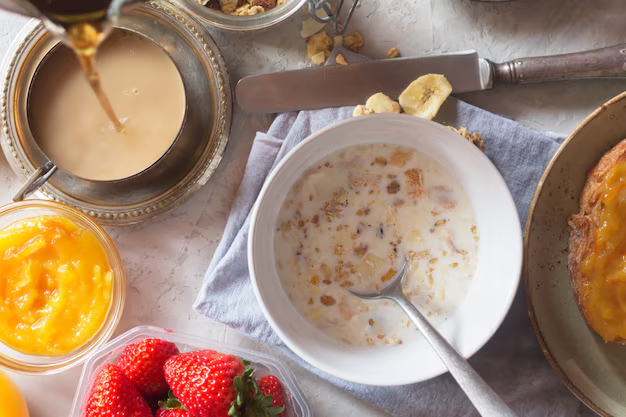Discover the Best Breakfast Foods for Diabetics
Navigating breakfast with diabetes can feel like walking a tightrope. You want to start your day energized and full, but you also need to keep blood sugar levels in check. Fortunately, with a bit of planning, your mornings can be both delicious and diabetic-friendly. Here’s a breakdown of healthy options to help maintain those delicate balances, with an added peek into valuable resources that can ease the financial burden of managing diabetes.
Top Breakfast Choices for Diabetics
Oatmeal: A staple that never goes out of style, oatmeal is a complex carbohydrate rich in fiber. It’s known for keeping blood sugar levels stable and promoting a feeling of fullness. Opt for steel-cut oats or unsweetened varieties, and top with fresh fruits, nuts, or a dollop of Greek yogurt for extra goodness.
Eggs: Versatile and packed with protein, eggs can be the hero of a diabetic breakfast. Whether you prefer them boiled, scrambled, or in an omelet, eggs help steady blood sugar levels and keep hunger at bay. Pair them with whole-grain toast or a side of sautéed vegetables for a balanced meal.
Greek Yogurt with Berries: Low in carbs and high in protein, Greek yogurt is an excellent breakfast option. Top with a handful of fresh berries, which are naturally lower in sugar than other fruits, for a refreshing and nutritious start to your day.
Avocado Toast: If you're craving something more savory, avocado toast on whole-grain bread is perfect. The healthy fats in avocados aid in stabilizing blood sugar. For extra protein, add a poached egg or a sprinkle of pumpkin seeds.
Smoothies: Craft a smoothie with low-glycemic index fruits like berries and spinach, and add a scoop of protein powder or unsweetened almond milk. This can be a quick and nutritious option, especially on busy mornings.
Chia Seed Pudding: Prep chia seed pudding the night before by soaking chia seeds in almond milk or yogurt. In the morning, add toppings like nuts or cinnamon for a burst of flavor and nutrients without spiking blood sugar levels.
Budgeting for a Healthy Lifestyle
Eating well is only one part of managing diabetes; navigating the associated costs is another. Luckily, there are multiple financial assistance options available:
Medicaid: If you qualify, Medicaid can help cover the cost of diabetes medications, doctor visits, and even supplies like test strips and lancets.
Supplemental Nutrition Assistance Program (SNAP): This can reduce the burden of grocery bills by providing funds to purchase healthy foods, ensuring you maintain a nutritious diet.
Health Savings Accounts (HSAs) and Flexible Spending Accounts (FSAs): These accounts allow you to use pre-tax dollars to pay for medical expenses, easing financial stress related to diabetes management.
Patient Assistance Programs: Offered by pharmaceutical companies, these programs can provide free or discounted medications to those who meet certain income criteria.
Support and Resources
Taking control of diabetes is not just about what you eat; it's also about utilizing available resources to support a comprehensive wellness plan. Here's a quick glance at potential financial aids:
| 🌟 Financial Resource | 💡 Description |
|---|---|
| 🏥 Medicaid | State and federal program covering medical expenses for those with limited income. |
| 🥗 SNAP | Assists low-income individuals in purchasing groceries. |
| 💰 HSAs/FSAs | Helps pay for qualifying medical expenses with pre-tax dollars. |
| 💊 Patient Assistance | Offers reduced-cost medications through pharmaceutical companies. |
A balanced breakfast is vital not only for maintaining energy but also for good diabetes management. By combining knowledge of diabetic-friendly foods with financial resources, you lay the groundwork for a healthy and stress-free lifestyle. Making informed choices will help you maintain your health while keeping your financial worries at bay.
